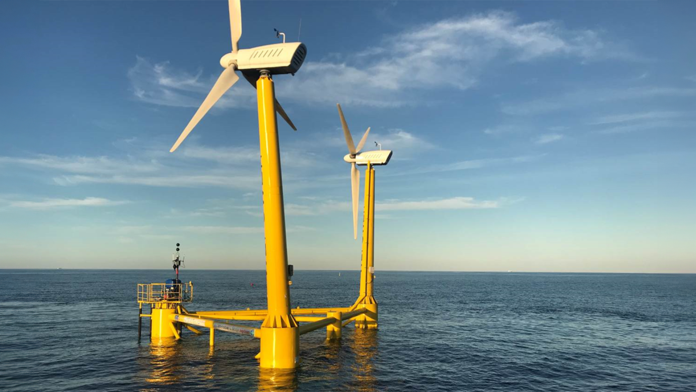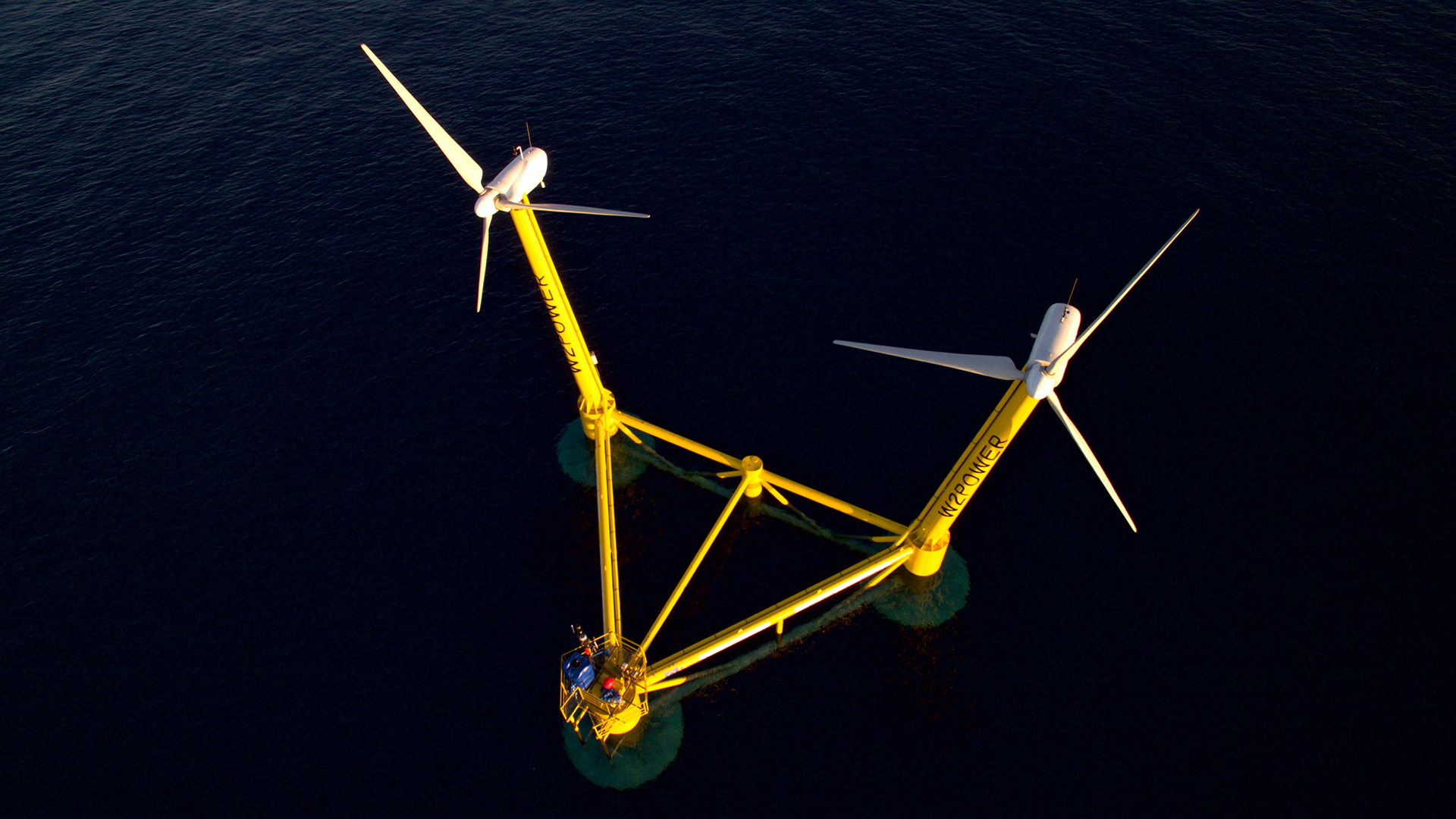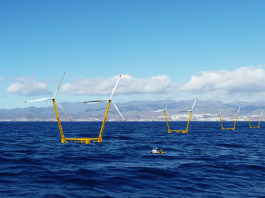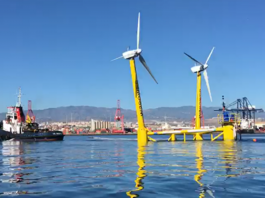EnerOcean’s W2Power floating wind platform is advancing on proven mature offshore technologies to deliver a cost-effective and efficient deep-water offshore wind solution.
Driven by the pressing need to reduce carbon emissions and reach net zero goals, the focus on renewable energy technologies is greater than ever at present.
Wind energy is a highly promising renewable power source, offering cost-effective clean energy with low-maintenance requirements and high efficiency. In particular, floating wind power is gaining attention as it extends the benefits of offshore wind to countries with limited shallow waters, breaking down geographic barriers to renewable energy adoption.
Floating wind power paves the way for a higher proportion of offshore wind energy to contribute to the global energy supply, offering greater flexibility to align with stringent environmental regulations – a pivotal factor in specific markets.
Overview of W2Power
Based in Spain, marine energy engineering company EnerOcean is dedicated to transforming the renewable energy sector with its development of the W2Power floating wind platform.
The main objective driving the evolution of the W2Power technology is to be the most cost-effective floating offshore wind solution, reducing the global cost of energy, and also enabling other benefits like multi-use (aquaculture, energy storage, wave energy, etc.).
W2Power in its current design allows up to 20 MW power on a single floating foundation, using two commercially used offshore wind turbines currently on the market. Since 2019, W2Power has been the first floating offshore wind platform in Spanish waters and the first twin-turbine floating solution to reach open-sea testing in the world, achieving TRL6.
Broadening the opportunity for offshore wind power
Floating wind has been identified as a way to obtain the benefits of offshore wind for countries that lack shallow waters. Even for countries that also have shallow waters, floating wind will allow less congestion in their seas. Floating wind also has fewer permitting problems. Worldwide, floating wind will allow a higher percentage of offshore wind into the energy supply. Having more options will make it easier for offshore wind developments to become compatible with environmental limitations.
Cost-effectiveness
One of the major challenges with floating offshore wind is the associated costs. Compared to bottom-fixed offshore wind, the industry as a whole has much less experience in the development of floating offshore wind farms. There is also the pressure to compete with other renewables. Whilst floating offshore wind does not need to be the cheapest solution, it must provide a higher value, e.g. by delivering more full-load hours (higher capacity factor) than other sources.
The W2Power platform offers a cost-effective floating wind solution that has the maturity level to be included in planning complete projects. EnerOcean has completed a deep certification process to prove the level of maturity needed. W2Power’s highly considered design, that will have the industry’s lowest CapEx costs, promises to be pivotal in helping floating wind make a real impact on the energy system.
There are several elements helping to reduce the cost of production for the W2Power platform.
Firstly, the lightweight structure of the platform enables EnerOcean to optimise the amount of steel per megawatt of power.
Another innovative element is using a smaller draft, allowing for the use of existing ports rather than going to specific ones further from the installation point. It also removes the need to reinforce or modify the harbours and ports.
The system also uses smaller turbines at a lower height than other offshore wind offerings. Smaller turbines are lighter and result in a cheaper assembly and the lower height means that loads on the platform at sea are less, so it can use less steel than a platform for one huge turbine. In turn, the components used are also smaller and easier to mobilise (despite producing the same amount of power), reducing OpEx further.
The system is self-orienting, meaning that the pair of turbines always stay facing the wind and facilitating the use of closely-spaced turbines. There is also no need for a yawing system for the turbines, which is one of the more unreliable components as it can take a long time to repair if there is a breakage.
Multi-use solutions
Bringing further value to the W2Power system, Enerocean has, in its R&D portfolio, been actively working for many years on several potential multi-use combinations for the platform.
One of the more interesting combinations is the mix of offshore wind and fish farming. EnerOcean has worked closely with fish farming experts and, through collaborative discussions, has identified significant synergies between the two uses.
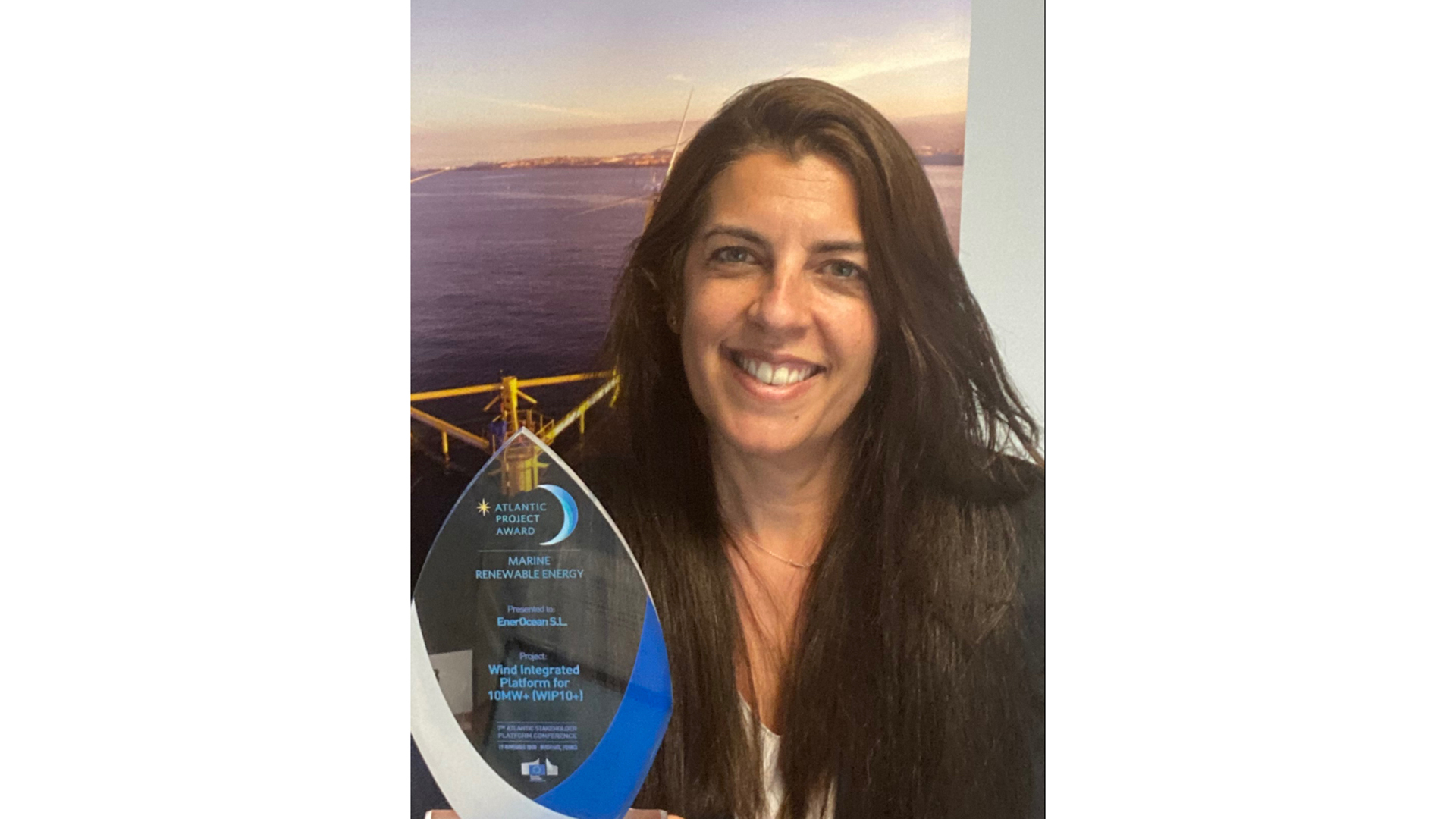
Currently still pre-commercial, multi-use will need to be developed without complicating the permitting process. It also needs to be proven that the benefits from combining the two uses outweigh the added complexity. When the governments and investors understand that multi-use will ensure that sea space is used more efficiently, and there are also less environmental interactions, it will emerge as a clear option for
many markets.
Proven at-sea testing and continuous development
Using an at-sea prototype has allowed EnerOcean to see its innovation proven at sea and is an important step in validating a technology solution. The real-life testing experience was a big step towards the validation of the floating unit, enabling the company to test the reliability, stability, installation, behaviour, and alignment in real time. During the testing period, the company did not need to perform any maintenance. It was able to check and install, and temporarily remove, the prototype using simple methods at sea. In recent R&D projects, Enerocean has validated the use of new and innovative materials.
EnerOcean is also considering the use of new or alternative materials in some R&D projects. The company has been studying the use of concrete, flat panels, and composite for some of the components.
This will enable the company to consider different options for different markets so it can adapt to the needs of potential clients all around the world.
About the authors
Eng. Pedro Mayorga, Co-Founder and the Chief Executive Officer
Pedro holds an Industrial Engineering degree from Malaga University and worked in General Motors as a Manufacturing and Maintenance Engineer, and as a Technological Area Manager in the Electrical Technology Institute (Valencia). Since 2001, he was involved in or co-ordinated 50 R&D projects, public and private, national and European, most of which in offshore renewables. From 2007, he was CTO of EnerOcean, responsible for projects funded by national, regional and European bodies, before being promoted to the company’s CEO in 2022.
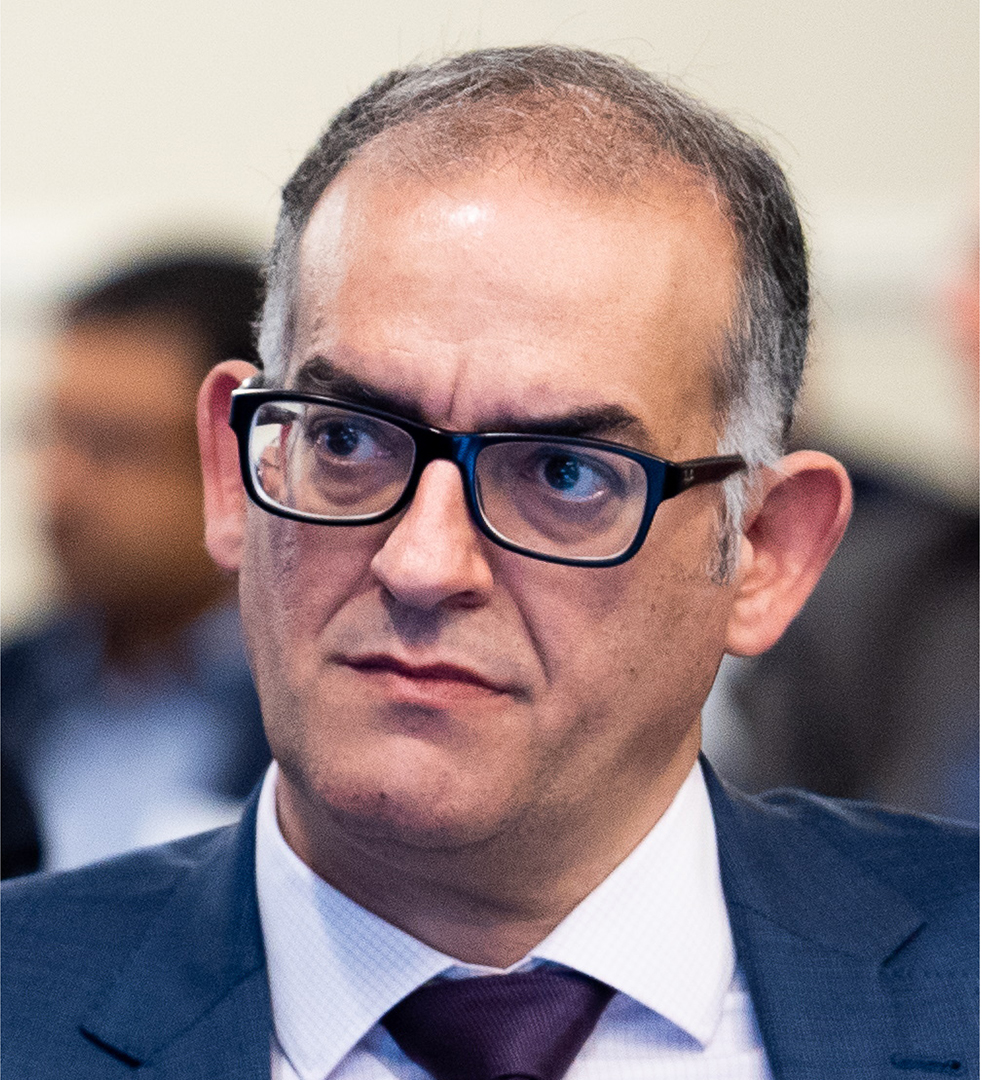
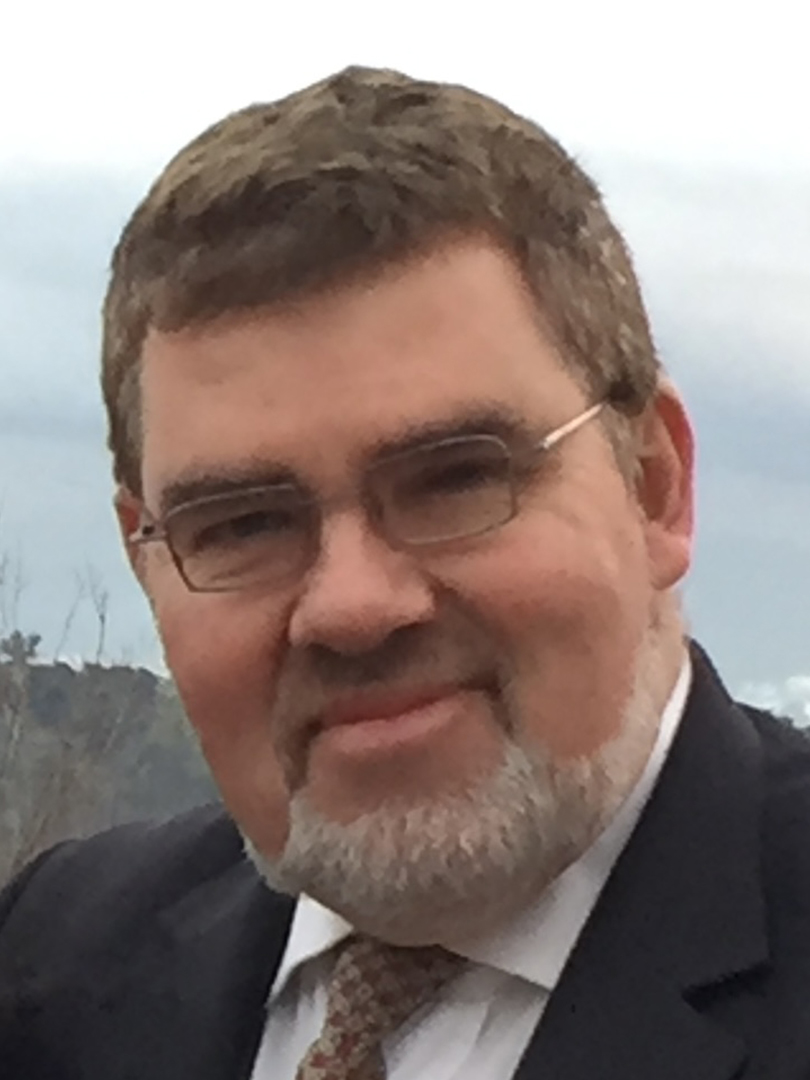
Pedro served on Spanish and international Technology Platforms for H2 & Fuel cells and Electricity Networks ‘Smartgrids’, the latter on its advisory council. He is the author of numerous technical publications and inventor of several patents. As EnerOcean CTO, he has participated in FP7 projects Tidalsense, Tidalsense Demo, TROPOS, Eurostars Q-SAIL, H2020 RealTide and Reshealience as main researcher, and in national projects e.g. WAVEPORT, SEAMAR, ORPHEO, and in multiple MARINET testing rounds. He coordinated a project in the ERA-NET DemoWind where the W2Power floating platform was successfully demonstrated at sea. Pedro is also active in regional and national Industry Clusters and serves on the Board of APPA, Spain’s Association of Independent Power Producers, currently President of APPA’s Marine Energy section.
Please note, this article will also appear in the 19th edition of our quarterly publication.

